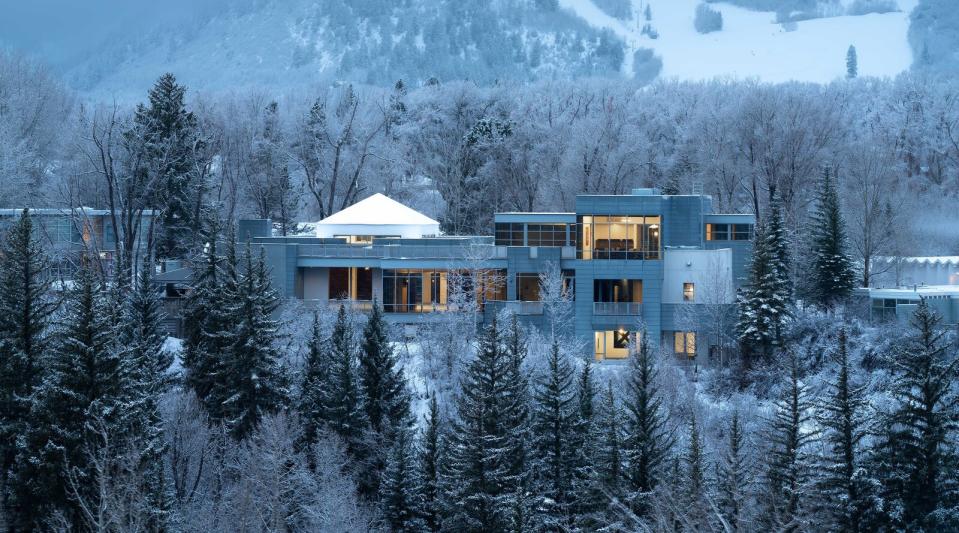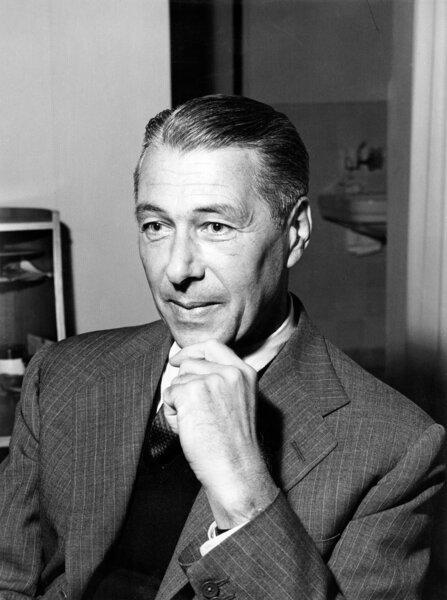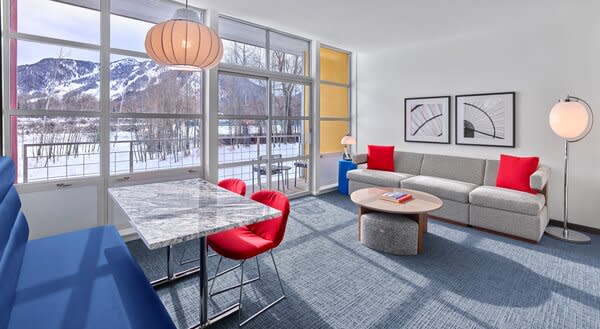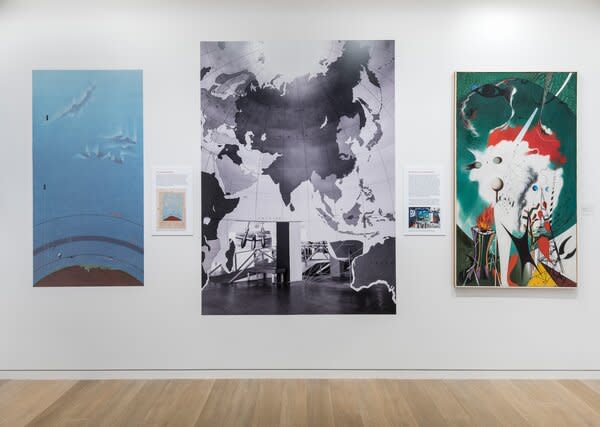A Visit to Aspen’s Surprising Bauhaus Enclave
- Oops!Something went wrong.Please try again later.
- Oops!Something went wrong.Please try again later.
- Oops!Something went wrong.Please try again later.
Designer Herbert Bayer helped transform the Colorado mountain town into a hub for skiing and culture. I went to the newly revamped Aspen Institute campus to see what remains of his modernist influence.

When Chicago businessman Walter Paepcke first visited Aspen, Colorado, in 1945, it was a quiet, former mining boomtown fully in its bust years, whose population had dwindled to below 1,000. There was no ski resort, just a few runs and zero chair lifts, and no Balenciaga or Prada stores. The main road, Highway 82, was still open range.
Still, Aspen’s natural beauty inspired Paepcke; he saw it as the perfect place for clearing the mind—and, perhaps, for a bit of networking—something everyone, from artists to fellow businessmen, could appreciate. To draw great thinkers to the town, he envisioned an institute inspired by philosopher Mortimer Adler’s Great Books seminar at the University of Chicago (which he had attended), and predicated on the idea that most issues that arose in business were not technical problems but moral or intellectual ones. Though an industrialist and patron of the arts—helping fund the New Bauhaus school in Chicago—Paepcke wasn’t an artist or designer (he ran the Container Corporation of America, a corrugated-box manufacturer). So, to help transform his vision for the sleepy mountain town and the newly established Aspen Institute, he would need a little help.
Paepcke’s first pick to design the Institute was German architect and Bauhaus founder Walter Gropius. Gropius declined, but instead suggested Herbert Bayer, a Bauhaus-educated Austrian designer who had spent much of the 1920s studying and teaching at the German art school before a stint as art director for Vogue Berlin. In 1938, the imminent onset of World War II prompted Bayer and his first wife, Irene Bayer-Hecht, to leave Germany for New York, and in 1946, at Paepcke’s invitation, Bayer moved with his second wife, Joella Synara Haweis, to Aspen.
Though Bayer was hired to design the Institute, Paepcke had broader ambitions in mind. Upon Bayer’s initial arrival, the two got to work restoring significant Aspen landmarks, such as the Hotel Jerome, Wheeler Opera House, and some private homes, before moving on to projects constructed from scratch. During his time in Aspen, Bayer collaborated with other modernist figures, perhaps most significantly architect Fritz Benedict, who trained under Frank Lloyd Wright. In 1946, when the Aspen Mountain ski resort opened, Bayer and Benedict built the first sundeck at the peak—an octagonal building with windows all around, a fireplace in the center, and a pitched roof that captured water and snowmelt to drain into the cisterns below, to account for the practical challenge of water access at 12,000 feet. The sundeck highlighted a key tenet of Bauhaus design: "form follows function." (Unfortunately, wind patterns blew snow in a way such that the water capture system never quite worked as planned; still, it was a valiant attempt).
The Aspen Institute, however, would prove to be Bayer’s magnum opus: Today, the campus includes Aspen Meadows Resort, where I was invited to spend a few days in January. After lightly familiarizing myself with Bayer’s work, it was easy to see his mark everywhere on the campus: the low-slung, rectangular buildings, built with cinder block, are utilitarian and unobtrusive, prioritizing large windows that open out to a view of the campus meadows and, beyond, Aspen Mountain—as though, like the octagonal lodge that once stood at the top of the mountain, any bit of wall not reserved for a view outside would be wasted space. The landscape is softer and rounder than the buildings, made up of undulating streams that do double duty as irrigation ditches, and paths that wind around Bayer’s famous earthworks and down to the banks of the Rio Grande.
In 2022, Aspen Meadows was acquired by Salamander Resorts, which has since embarked on a series of renovations to honor Bayer’s original design. Historical preservation rules prohibited them from any exterior renovation other than paintwork, but the interiors have been redesigned with an eye toward functionality: my suite had a comfortable banquette for eating or working, a small nook for storing ski clothes, a stretch of windows on either end, and a small balcony. The palette is mostly contained to neutrals, reds, and blues, and simple geometry, soothing on the eyes and mind.
At the edge of the Aspen Institute campus is the Resnick Center for Herbert Bayer Studies, an exhibition space dedicated to preserving Bayer’s legacy. Its construction was funded by the Institute in 2019, and most of the structure was built at the height of the pandemic when "no one thought they would touch anything again," says Resnick Center communications manager Sarah Shaw, who was kind enough to give me a tour on her day off. Everything that can be touchless, is: the lights, the doors, even the toilets.
We began upstairs, where a photographic timeline wraps around one room, depicting Bayer’s life and Aspen’s evolution over the years, including some iconic nostalgic shots of skiers on wooden skis. Shaw then led me downstairs, where a rotating series of exhibits depict Bayer’s various eras and disciplines, of which there are plenty to cover. During my visit, on display was Concept of a Visualist: Herbert Bayer’s World Geo-Graphic Atlas. (The exhibition will be succeeded in June with Bauhaus Typography at 100). Copies of the atlas—commissioned by Paepcke for the 25th anniversary of the Container Corporation of America and debuted at the 1953 International Design Conference at the Aspen Institute—sat open under glass like Gutenberg Bibles, with significant figures and charts blown up and pasted to the walls.
Bayer was clearly fixated on confronting the Mercator projection, which for centuries has been the predominant way the earth is mapped on a flat, two-dimensional surface, and which disproportionately inflates objects close to the poles. I walked into a recreation of Bayer’s Outside-In Globe, which transfers the features of the earth’s oceans and landmasses to the interior of the sphere, allowing the viewer to observe them at a different, and larger, scale. Instead of spinning the globe, I stood in the middle and rotated myself.
See the full story on Dwell.com: A Visit to Aspen’s Surprising Bauhaus Enclave




